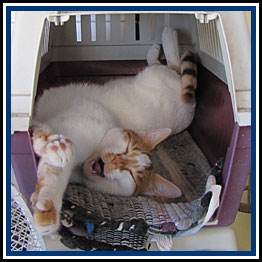Why? Because Google uses HTML Alt Attributes to index pictures
Google reads the HTML alt attributes associated with web images in much the same way a visually impaired user’s text-only browser or screen-reader would, to determine the picture’s content. And because these picture descriptions are seen by SEOs to count towards a web page's overall relevance towards its target keywords, some web promoters simply jam all their clients' alt attributes full of irrelevant keywords instead of providing the short image description they were originally intended for.
This renders them worthless from a descriptive disability access point of view.
And yet, since Google is gradually catching up with this particular tactic, proper use of descriptive HTML alt attributes is far more likely to produce lasting results within search engine listings trying to keyword-stuff the images across an entire website could ever hope to achieve.
But what exactly is meant by the term ‘Descriptive Alt Attribute’?
As page one of this article (‘Web Accessibility’) states, the alt attribute within a web page’s HTML image tag is a textual description of that picture’s meaning or content.
If your web page contains an imageof cat stretching and yawning, such as the one to the right, the appropriate description within your image tag's alt attribute would be “Sleepy cat in box stretching and yawning”, not simply “Cat”, as this would not fully convey the picture’s meaning.
Remember that visually impaired surfers need you to physically tell them what's in your pictures.
|
|

|

|
|
By the same token, if an image is part of your marketing materials, there is nothing stopping you from conveying its meaning to blind or partially sighted users while at the same time putting in a keyword for promotional purposes, within reason of course.
For example, if your site is selling used laptops and an image depicts a Toshiba Satellite M40™ Notebook, you can express the HTML alt attribute as follows:
alt=”Used Laptop: Toshiba Satellite M40”
By using HTML alt attributes in a properly descriptive manner, you are able to communicate a picture’s meaning to visually impaired web users, while still including a sensible keyword for your own promotional purposes at the same time. |
Ultimately there is nothing wrong with using image alt attribute as part of your web promotion strategy, as long as you never forget their primary function, which is to be an aid to disability access. The trick is finding the balance between creating a short, concise description for your images, and including your desired keywords in a sensible, responsible manner.
While disabled surfers may only account for an extremely small percentage of Internet users, their needs must be considered in all aspects of truly . Recent developments in the Californian High Courts (Article: , 15 Sep 2006) have served to illustrate that the Cavalier attitude which makes the Internet one of the last remaining places where discrimination against disabled users is still commonplace cannot continue indefinitely.
Click here to return to Page 1, Alt Attributes in Image Tags
Back to Web Design Articles
Back to Main Articles Category
Back to Top of Page |